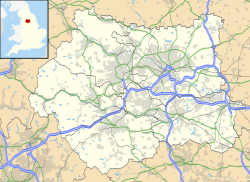| Bradford Moor Barracks | |
|---|---|
| Bradford, West Yorkshire | |
 The now-reopened Barrack Tavern, which used to be frequented by soldiers, is opposite the site of the former barracks. | |
| Site information | |
| Type | Barracks |
| Owner | War Office |
| Operator | |
| Location | |
| Coordinates | 53°47′54″N1°43′11″W / 53.7982°N 1.7196°W |
| Site history | |
| Built | 1843–1844 |
| In use | 1844–1931 |
Bradford Moor Barracks was a military installation at Bradford in West Yorkshire, England.
